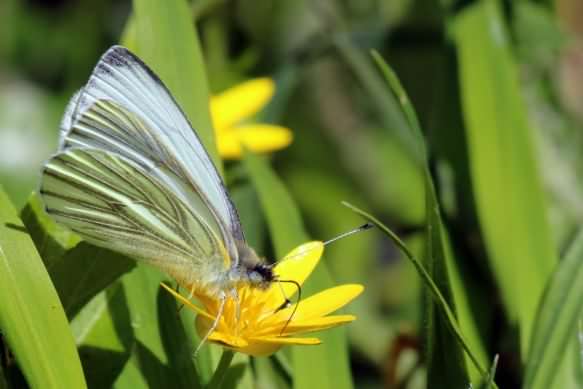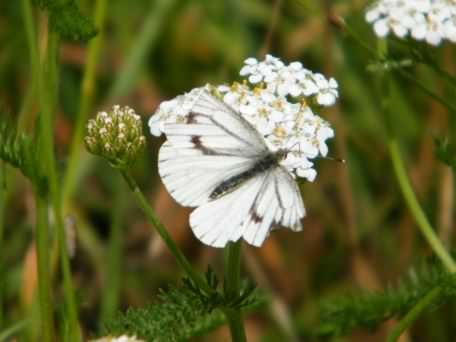
Photo ©2014 Charles J Sharp
Click any photo for a larger image

A very tatty Green–veined White
Photo ©2010–

Photo ©2014 Charles J Sharp
Click any photo for a larger image

A very tatty Green–veined White
Photo ©2010–
Green–veined White - Pieris napi
Family - Pieridae
The Green–veined White is a resident and common butterfly of damp grassland and woodland rides which is often mistaken for the Small White especially when glimpsed at a distance. Seen on the wing from spring until autumn in parks, gardens, meadows and woodland clearings it is a fairly common and widespread species found over most of the British Isles and Europe, parts of North Africa, Asia and in North America, although it is absent from the Shetlands and areas of the Scottish Highlands.
First brood adults which can have lighter upper side markings than later broods typically emerge in late April and are seen until June. The second brood starts to emerge in early July but in good years, the second brood may emerge a few weeks earlier in late June and may result in a third brood.
The "green" veins on the underside of the adults are an illusion created by a combination of yellow and black scales and can show a large variation in colouration and shading as can the extent of the spotting. The female has two spots on each forewing, the male only one. The veins on wings of the female are usually more heavily marked. The underside hindwings are pale yellow with the veins highlighted by black scales giving a greenish tint, hence Green–veined White.
The primary larval food plants of the Green–veined White are - Charlock, Cuckooflower, Garlic Mustard, all of which are found in Brickfields Park, and Hedge Mustard – Sisymbrium officinale, Large Bittercress – Cardamine amara, Wild Cabbage – Brassica oleracea.
Agassiz #58.008, Bradley & Fletcher #1551
Site design ©1999– Brickfields Country Park - Privacy -